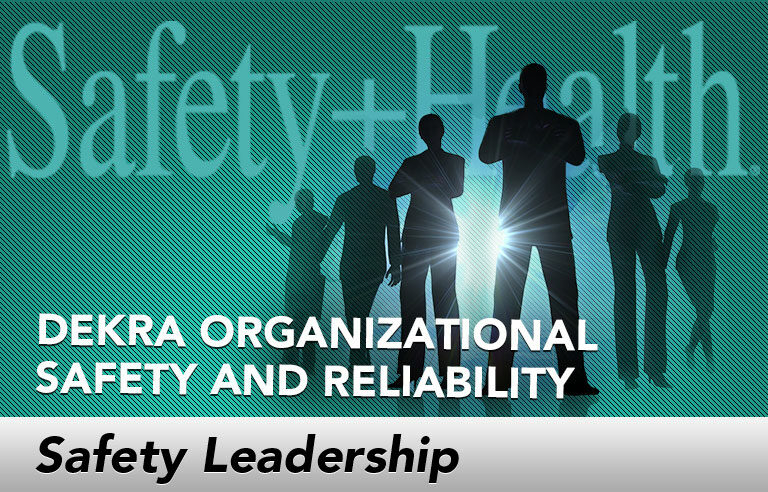Safety Leadership: Where’s the urgency? Valuing execution over urgency in high-reliability organizations

Editor’s Note: Achieving and sustaining an injury-free workplace demands strong leadership. In this monthly column, experts from global consulting firm DEKRA Insight share their point of view on what leaders need to know to guide their organizations to safety excellence.
“20 Ways to Create a Sense of Urgency,” “Building a Culture of Urgency,” “Can Leadership Urgency Be Taught?” Search “urgency in organizations” online and you’ll be swamped with articles, white papers and blogs extorting the virtue of urgency and how – with the proper training and motivation – you, too, can create urgency within your organization. In many aspects of the organization, urgency is necessary to survive in an increasingly global economy in which existential threats to your business can emerge from 8,000 miles away or the garage next door. But can unintended consequences arise from this focus on urgency?
Creating value for urgency certainly establishes a strong bias for action. This is the “git ’r done” culture we’ve all seen so often. However, one of the unintended consequences is a belief that time is so precious, it is more valuable than perfection. Alternatively, when execution is valued, the emphasis is on uniformity of approach, eliminating process exceptions and having the time to do things right. In a high-execution environment, things might take more time but errors are less common. Let’s contrast these two values to see how they interact.
- Low-execution/low-urgency environments are apathetic and not interested in performing well or quickly. Unless this is a monopoly, this type of organization will not last long and, indeed, this type of environment is commonly found in government.
- Low execution/high urgency is fast but sloppy. Fast-food chains are commonly found in this quadrant, in which the consequences for making errors are fairly low and the value proposition is speed.
- High execution/low urgency is meticulous but slow. Archeological digs and surgeries in which the patient is stable fall into this category. The emphasis is on perfection, not how fast the work is done.
- High execution/high urgency is both perfect and fast. I submit that this is fool’s gold – an impossible standard. Working urgently impacts how we think and consequently how we do our jobs. We’re less likely to engage our thinking brain and more susceptible to decision biases, situational blindness and error. Therefore, creating a high-urgency environment automatically limits the extent of execution possible in the organization.
Another way to look at this is to ask: Are the consequences worse for making an error than for being slow? For many parts of the organization such as sales, marketing and possibly product development, the answer may be that it’s worse to be slow than to have errors. In those, a high-urgency environment is warranted. In operations and high-hazard environments, however, the consequences for error are so much higher than the consequences for being slow that execution must be valued over urgency.
So how is a high-execution environment created?
Emphasize execution over urgency. Until you step back and look at your site or operations from a distance, you may not notice all the ways that urgency is communicated and reinforced. The first step is to begin to turn the tide by communicating, measuring and reinforcing execution.
Regularly engage in checking activities. One of the most important but unheralded jobs of a leader is to check – to make sure that jobs, steps, processes and activities (and not just outcomes) are occurring the way they are supposed to.
Dampen urgency reinforcers. “Once you get that job done, you can clock out and go home.” This seemingly innocent statement reinforces urgency. Identifying and dampening these reinforcers, while rewarding execution, will slowly change the emphasis.
There is no magic formula for creating a high-execution environment, but the first step is recognizing what urgency has done to increase our exposure and tipping the balance back to execution.
This article represents the views of the author and should not be construed as a National Safety Council endorsement.
 Michael Mangan is vice president of research and development for DEKRA Insight. His work helps organizations understand performance and design interventions for improvement.
Michael Mangan is vice president of research and development for DEKRA Insight. His work helps organizations understand performance and design interventions for improvement.
Direct to your inbox: Sign up to be notified in email about new Safety Leadership columns.
Post a comment to this article
Safety+Health welcomes comments that promote respectful dialogue. Please stay on topic. Comments that contain personal attacks, profanity or abusive language – or those aggressively promoting products or services – will be removed. We reserve the right to determine which comments violate our comment policy. (Anonymous comments are welcome; merely skip the “name” field in the comment box. An email address is required but will not be included with your comment.)

